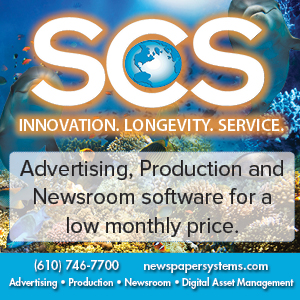Give your advertising some personality
John Foust
Apr 1, 2021

Kirk likes to work directly with his ad clients on their creative strategies. “Making a sale is just the first step in the journey,” he said. “It’s a big part of my job to make sure my clients stand out from their competitors on the page and on the screen. When I work with several advertisers who are in the same type of business, it’s a special challenge to create a different ad personality for each one of them.”
Generally speaking, there are two types of advertising. There are image ads that are designed to give consumers a good feeling about the advertiser (for example, “Your safety is our biggest concern”). And there are response ads that are designed to move readers to take action (“Buy one, get one free”).
Kirk is on target in his comments about personality. Whether image or response — whether print or digital — every ad has some kind of personality. Instead of leaving that important advertising ingredient to chance, he is determined to help them develop ad personalities that appeal to their respective target audiences.
Let’s take a look at a few of the tools that can contribute to an ad’s personality — the type of personality that a client wants to project:
1. Typography. When we speak, it’s not just what we say, it’s how we say it that communicates a message. It’s the same on the newspaper page or the digital screen, so much so that typography has been called “the voice of print.”
From a bold, sans serif headline for a construction equipment distributor to a lighter serif headline for an upscale clothing store, type fonts can create important first impressions.
2. Photographs vs. illustrations. To depict realism, use a photograph.
Photos are usually more true-to-life than drawings. Even if a photo has been touched up, consumers are willing to accept it as a reasonable representation of the subject matter.
Although some illustrations can be as realistic as photographs (consider close-cropped, photo-like depictions of tires), most illustrations leave more to the imagination than that. There are a number of choices, including pen and ink, gray tones, charcoal, watercolors and cartoons.
3. Products vs. people. Three possible options are: products by themselves, people by themselves or people using the products. In other words, an ad can depict a widget, people (in posed or candid shots) or a person using a widget.
4. Copy style. Some advertisers present information in a straight-forward pattern that reads something like this: “(1) feature-benefit, (2) feature-benefit, (3) feature-benefit, (4) buy today.” Others like to tell — or imply — a story. For example: “Imagine getting yard work done quickly, so you’ll have the rest of the day for fun.”
“There are lots of creative options and combinations that give us ways to customize ads for our clients,” Kirk said. “Even if they sell the best products in the world, nobody will read their ads unless they attract attention on the page. That’s why the sale is only the beginning of the process.” © Copyright 2021 by John Foust. All rights reserved.
John Foust has conducted training programs for thousands of newspaper advertising professionals. Many ad departments are using his training videos to save time and get quick results from in-house training. Email for information: john@johnfoust.com









